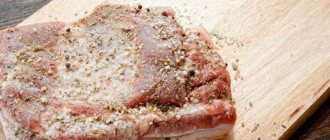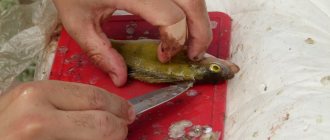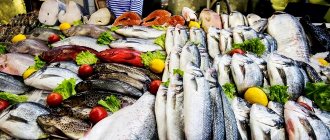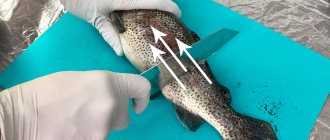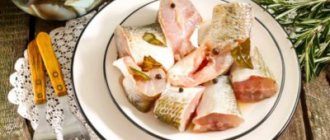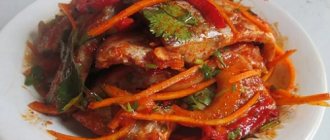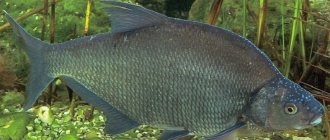Feeding the striped robber during winter fishing is an effective method of attracting and retaining it. Do-it-yourself bait for perch in winter is prepared from various animal and even plant components. You can also find ready-made mixtures in stores. You need to understand that fertilizing must be applied correctly. The effectiveness of its effect on fish depends on this, and only then on the composition.
Fishing tactics and feeding
Bait for perch is used in accordance with striped fishing tactics, which depends on the season and conditions of the reservoir. During the first ice or the last ice, when the perch is active and wanders throughout the water area in small schools, the angler just needs to collect and keep the fish in the fishing zone. In the middle of winter, the task is different - the predator needs to be stirred up and forced to feed. In some conditions, you can lure perch to the hole in winter with a pinch of live bloodworms. In others, with a plant mixture that will collect the fry, and only then the perch. The striped pirate is unpredictable.
In some cases, bait is not required at all - the greedy perch runs from all over the surrounding area to the playing balancer or jig. This happens during periods of zhora, when the striped one purposefully scours its grounds in search of food. Such moments can be caught on the first and last ice. Bait clearly improves fishing results. Therefore, athletes always feed perch at competitions.
Glukhozimye
In mid-winter, the search areas for perch become narrower. It is important to understand that the predator must initially be found. If during periods of its activity it is possible to feed in a fairly wide range of places (in order to collect active fish from afar), then in the dead of winter the school stays mainly at one point and does not move far. Therefore, there is no point in pouring out bait in an empty place - the fish will not find it (will not look for it). Tactics are changing. You need to feed only where the fish have somehow shown themselves in order to collect them from a small area. Winter fishing for perch with bait is most often practiced during this period. The task is to provoke the passive predator and force it to start feeding. A pinch of live bloodworm dropped into the hole can make fishing possible.
On the current
When feeding perch in water bodies with a current, care must be taken to ensure that the flow of water does not carry the bait away from the fishing zone. To do this, the mixture is placed in a special large feeder, which is installed on the bottom upstream from the fishing holes. The bait will be washed out by water and form a feeding spot.
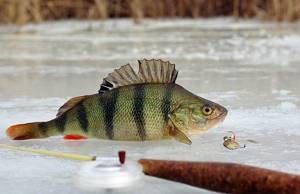
Techniques and tactics of feeding perch
A rich catch of perch depends not only on correctly selected store-bought or home-prepared bait. The technique and tactics of feeding this fish have a huge impact on the final result.
When preparing for fishing, you need to take into account all the features of the conditions. It is also necessary to take into account the depth of the reservoir, current, time of day and season.
The tactics for feeding a place also vary:
- Professional fishermen advise feeding the area where the fish will be caught a few days before fishing.
- If this advice has been taken into account, then directly on the day of fishing you need to feed the representatives of the aquatic world in smaller portions and use a bait mixture that does not contain ingredients that will saturate the fish.
- If the process takes place in the summer, it is recommended to roll the composition into clay balls. When cast, such a composition will form a cloudy cloud in the water, which will attract the attention of a potential victim. It is best to cast close to the floats.
- For feeding in winter, it is best to choose stationary (in high currents) or drop-down (in standing water) feeders. If you plan to fish in a reservoir of great depth, where, in addition, there is a strong current, it is best to use a feeder, you need to open it above the bottom.
- If the reservoir is shallow in depth or there is no current in it, then it is best to feed the prey by throwing bait into the hole or opening the feeder immediately under the ice.
- It is important to consider the current at all times of the year, as strong currents will require the use of more feed than might be required when fishing in still water.
- You should go to the reservoir early in the morning or in the evening.
- It is best to use exclusively animal food as bait for perch. If the composition is based on bloodworms, then it must be used exclusively in live form, since with its movements in the water it will attract aquatic inhabitants.
A well-selected or home-prepared bait mixture will help ensure a solid catch even for a novice fisherman.
How to attract perch in winter
Now let's look at the composition of perch bait. It is important to understand that perch is a predator. The correct composition of the fertilizer is based on this. The main element is animal components. Most often, live bloodworms or jigs are used. Larvae and crustaceans hide at the bottom, making movements during their life activity. The fish feels this from afar with its lateral line. Live bloodworms will help attract perch in winter even on the most unbiting days.
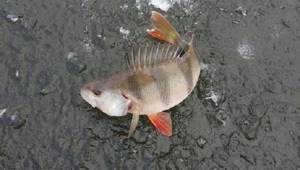
In addition to live food, there are many other ways to activate a good bite:
- Ready-made store-bought mixtures;
- Homemade groundbait with the addition of animal ingredients;
- Jar with fry at the bottom;
- Rubber glove with blood and puncture;
- Vegetable bait (to attract small things).
Store mixes
Ready-made baits for winter fishing for perch can be found in fishing stores. They are made specifically to attract predators. The main thing when fishing is not to overdo it. You need to put quite a bit of the mixture into each hole - we are not preparing a feeding table for bream or carp.
Catchy baits for catching perch in winter:
- Sensas 3000 Perch (Red – with the smell of bloodworms, Black – dung worms, Natural – cereals to attract fry).
- Dunaev for the predator.
- Traper Zaneta Zimowa.
The compositions are optimized and selected specifically for striped fish. But due to their special “predatory” composition, they also work on burbot and other predatory fish.
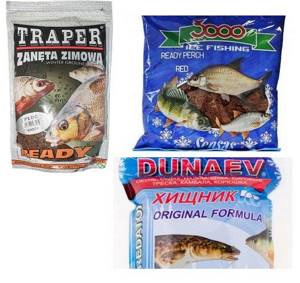
Bait for perches - in winter, autumn, spring and summer, how to make it yourself? Best Recipes
Perch is a predatory fish and has its own characteristics not only in fishing, but also in feeding it.
The key to a good bite and catch is the correct selection and preparation of complementary foods. Therefore, the fisherman must know not only what to feed the fish with, but also how to prepare this bait himself, how it differs from each other depending on the time of year, and, of course, how to feed it correctly.
- Experienced fishermen claim that perch is a capricious fish that is difficult to feed, but still possible. The omnivorous nature of the perch plays a big role in this; earthworms, maggots, offal, bloodworms and much more are perfect for it. The main thing is that the bait mixture contains residues of animal origin.
- To feed this predator, you can use bait with a strong odor. Suitable camphor oil, goose fat, honey, which are added to the main bait mixture. Another old but proven method is to lower a jar of live fish to the bottom. The rushing fish are great for attracting predatory perch.
Bait for perch at different times of the year
In summer, perches more often live in thickets, near snags, in stones, in holes and pools. The most suitable and accessible feeding for this time is earthworms. Leftover meat and offal are also suitable. It will attract bloodworms, mussels, amphipods, and pond snails.
The natural curiosity of a perch can lure it if you throw some river sand into the water. For secondary feeding, clotted blood is suitable. You can use the drug “Albumin” in its simple dry form or soak a piece of bread in it.
With the arrival of winter, when the first ice appears, the perch slows down its movement, and only closer to the middle begins its movement throughout the entire reservoir.
- Perch winters in small schools and it is more difficult for them to obtain food. Therefore, proper feeding is very important at this time. It allows you not only to stir up the fish, but also to attract it to one place for several days.
- Bloodworms are suitable for this; it is better if they are alive, but feed ones are also suitable. A few days in advance, you should throw pre-prepared, molded lumps of bloodworms into the hole, or sprinkle them in small portions every 15 minutes.
- It will sink to the bottom and mix with silt. This will allow the perch to feed in one place for several days. In winter, you can also use amphipods and chopped worms. The bait “Albumin - dry blood” has also proven itself well. It is used both in pure form and in addition to the mixture.
Autumn and spring
Already in the fall, perches tend to unite in small schools. They prefer quiet places without strong currents, in sandy slopes and flooded trees. This allows it to feed on small fish that live near the shore.
In the spring, when the snow melts, perch also rushes to the shore in search of the same small fish. At this time, the larvae of insects, dragonflies and butterflies become excellent subcortex. This type of food is familiar to him, which is why he responds to it quickly. You can’t do without bloodworms and chopped earthworms in spring.
DIY complementary feeding mixture
Perch, like a predatory fish, has a keen sense of smell and excellent eyesight. Therefore, bait is made with the addition of various oils, tinsel or glitter.
Fishing stores offer a huge selection of specialized baits, but experienced fishermen prefer to make them themselves.
A properly prepared perch mixture must contain:
Depending on the season, a food base of maggots, bloodworms, worms, and tubifex is added to it. And the final component is a spicy and aromatic additive in the form of oils or herbs. As well as cake, sunflower seeds, toasted hemp and flax seeds.
There are basic rules that must be taken into account when preparing:
- Dry blood, sawdust, dry milk and daphnia produce abundant turbidity.
- River sand, bloodworms, worms and maggots make the complementary feeding mixture more crumbly.
- Egg powder, oatmeal, clay are cemented.
- First, all the dry ingredients are mixed, and then water is added and small portioned balls are molded.
Best Recipes
- Fish fillet twister . Suitable for catching large perch. To do this, fish fillets are cut into small strips of about 5 centimeters, securely fastening it to the jig head. Leaving at the same time a small free end, which will play attractively under water, luring a predator to itself.
- For winter fishing . Mix finely chopped chicken or pork offal with bloodworms. Add a small amount of flour for viscosity. Roll into balls the size of a chicken egg and place in the freezer until completely frozen. Place in the hole three days before fishing.
- Finely chopped worms , bloodworms and crayfish meat are mixed with pork blood. Add a few drops of camphor and lavender oil and honey. Mix thoroughly, add fish scales. Then clay, you will need enough of it to make dense, non-crumbly balls.
- Mix fish meal with corn pulp , you should get about half a bucket. Add 150 - 200 ml pork blood. Mix the resulting doughy mixture thoroughly. Finely chop worms, crayfish meat, mussels, crabs, oysters, your favorite perch larva, bloodworms. Mix with flour mixture. Knead everything well. For viscosity, you can add a little clay, preferably if it is white.
How to properly feed perch?
If you use bait such as worms or maggots, then it is more convenient to use it in a feeder. To do this, small worms are placed in a small box with holes, which after a while begin to gradually emerge from them, thus attracting prey to the selected place. You cannot do without a feeder if there is a large current at the fishing site.
Dry mixtures are also used to attract predatory perch to the desired location . They are intended for small fish, which, in turn, become excellent bait for predators.
To constantly maintain it and keep the predator in place, it is necessary to regularly throw in small portions.
How to increase your fish catch?
Over 7 years of active fishing, I have found dozens of ways to improve the bite. Here are the most effective ones:
- Bite activator . This pheromone additive attracts fish most strongly in cold and warm water. Discussion of the bite activator “Hungry Fish”.
- Increased gear sensitivity. Read the appropriate manuals for your specific type of gear.
- Pheromone -based lures .
Tips and tricks
- On days when the perch is not active, several types of baits and baits should be used at once. This will allow you to find the ones that are most suitable for him at this time.
- If you can only catch small fish with a worm, but larger ones don’t bite, then you should try changing the bait. Small fish are perfect for this; they are more noticeable and interesting for a large predator, but for a small perch it will be simply too much for them.
- Experienced fishermen have proven that perch, as a predatory fish, prefers moving bait.
- To do this, they use the following method: after casting the bait, it is left motionless for some time so that the fish notices it. Then, with slow, smooth movements, with short stops, they gradually pull her towards them.
Source: https://apec2012.ru/masterskaya-rybaka/prikormka-dlya-okunej-zimoj-osenyu-vesnoj-i-letom-kak-eyo-sdelat-svoimi-rukami-luchshie-recepty
Live bloodworm, mormysh
As already mentioned, this is the main and often used winter bait for perch. At the beginning and end of winter, you can immediately feed the holes drilled in promising places. The predator actively scours the pond and, sooner or later, will find bait. In the dead of winter, we feed only after we make sure (by bites or using a winter video camera) that there are fish there. Otherwise, the casting of larvae will turn into a free action for the return of prodigal bloodworms to their native element. In reservoirs where a lot of jigs live, you can feed perch during winter fishing with these live crustaceans.
It is important to understand that when a reservoir is dominated by ruffe or rotan, the bait will primarily attract these types of fish to the hole. On the other hand, the boiling water underwater and the scurrying small things, in turn, also attract the striped robber very well. At shallow depths, fertilizer can be thrown directly into the hole. At great depths, it is necessary to use a dump truck to throw the larvae to the bottom directly below the hole.
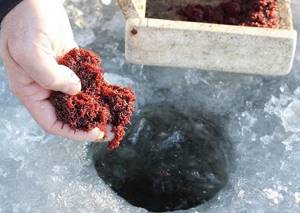
Bait made at home
Bait for perch is made by hand. Perch is a predatory fish, so the mixture must be of animal origin. The main components will be:
- feed bloodworm;
- chopped worm;
- mormysh;
- blood or minced meat;
The feed bloodworm is an excellent bait. The easiest way: drill a hole and pour a handful into it, but here you need to take into account two factors: is the reservoir deeper than 3 m. and the presence of an underwater current. In these cases, the bloodworm will be carried to the side or it will fall over a large area, which is not good. It is necessary to deliver the bait to the bottom using a “dump truck” - a cone-shaped container with an opening bottom. It is equally important to deliver the bloodworms unfrozen in winter. Experienced fishermen transport it in children's felt boots, then the bloodworm does not freeze and moves in the water. Perch attacks a moving bloodworm more actively than a frozen one.
Mormysh is probably the most favorite delicacy of perch. Amphipods are larger than bloodworms and very small predators do not attack jigs. This means an increased chance of catching a larger perch. But there are also disadvantages: mormysh is a rare bait and is not sold in all stores.
Chopped worm - in winter it is difficult to dig out these underground inhabitants. Therefore, if you are a very responsible fisherman, you can prepare them in the fall: dig them up and put them in the cellar. From our point of view, it is too complicated, bloodworms are in no way inferior to worms, they are sold all year round and are inexpensive.
Which blood is better: pork or beef? Doesn't matter. The main thing is that it is difficult to buy. There must be a slaughterhouse nearby or you must live in a village. If animals are not slaughtered nearby and you are a city resident, you can buy dried blood, that will also work.
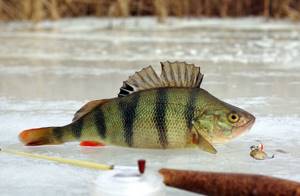
Animal components
Live larvae affect the lateral line of the predator. But he also has a well-developed sense of smell and vision. Perch is a pirate, he is attracted to any fuss and the smell of blood. Therefore, you can attract perch to the hole in winter using various animal components:
- Chopped dung (earthworm);
- Dried daphnia for aquarium fish;
- Ground bivalves, snails, mussels, zebra mussels;
- A jig or bloodworm that begins to disappear;
- Fish fat;
- Remains of crayfish, crabs, shrimp;
- Minced meat, fish or liver;
- Blood.
Such components can be thrown into the water in their pure form or mixed with vegetable bait, for example, breadcrumbs. Some of the listed products are difficult to get, so the most popular ones are bloodworms, jigs, and fish remains. Suitable, banally, are fish scales and intestines from a previous fishing trip, as well as cheap frozen capelin (sprat, blue whiting) from a department store (unsalted!)

Making bait for perch with your own hands
Of course, you can find any mixtures for fishing in stores, but homemade complementary foods will be no less effective.
Depending on the time of year, bait for perch is prepared differently. For example, in the summer, when preparing a mixture near a river, it is recommended to use earth, clay or sand, as they create a cloud of turbidity. It is also important to take water from the reservoir where fishing will take place. In summer you should also not refuse bloodworms, amphipods, worms, fry, and sometimes they are even caught using leeches. And since perch is a curious fish, you can throw sand or small pebbles into the water, to which it will definitely turn its attention.
So, let's look at a few summer complementary feeding recipes:
- You need to take bloodworms, sand, earth, clay or silt. The available components must be taken in a 1:1 ratio and rolled into tight balls.
- Take a glass of earthworms and chop them into small pieces. Then they need to be soaked in camphor oil or goose fat. After this, finely chopped crayfish is added there, about half a glass. At the next stage, we add eggshells, which we previously finely detailed, and tinsel. Mix everything thoroughly. In order for the mass to be plastic, it is necessary to add blood.
- We will need 1 part of finely chopped worms, soaked in 3 drops of lavender, camphor oil and honey, 1 part of blood and small scales, add 3 parts of bloodworms and crayfish, 5 parts of clay, mix everything and make balls.
In the autumn, when the water is still cloudy and the sun warms it up less, you can use the same baits as in the summer, only in a simplified version (you don’t have to add tinsel, just take silt and mix it with any meat).
As for winter, it is very good to use live bloodworms; with their movements they create vibrations in the water and attract a predator. You should also not give up worms, crayfish and other meat. Let's consider several options for winter bait.
- We harvest worms in the fall so that they can survive until winter. For bait, they will need to be crushed and mixed with breadcrumbs, ratio 1:1. We also make balls and use them.
- We take black bread, its crumb, add fresh blood, which can be purchased at markets, or you can take “Albumin”, and roll sausages, which will then need to be frozen. When fishing, you need to break off small pieces and throw them into the holes.
- If there is a sufficiently large current. Then you need to use a feeder. This method is also suitable for summer fishing. The simplest filler for a feeder is bloodworms. We fill the feeder with bloodworms, lower it into the water at the bottom and pour it out.
- Finely chop the insides of the animal (heart, kidneys, etc.). Add albumin or blood, bloodworms, flour, cereal (for viscosity) and roll into balls. We freeze it in the refrigerator, and three days before fishing, we lower it into the holes.
In addition to seasonal baits, there are also universal ones. They are suitable for any time of year. Let's consider several cooking options:
- You need to take clay or crackers, or fishmeal, rolled oats, and live bloodworms, tinsel, and blood.
- We take crayfish, dry clay, blood, jigs, eggshells, tinsel and worms.
- The recipe can also be the aquarium method, when fry are placed in a jar and the entire structure is immersed in water.
- Secondary feeding is also a very effective method. To feed the fry, you don’t have to spend money on “meat”; just take cereal or bread. A school of fry will definitely attract the attention of a perch.
Blood
If the fisherman has blood available (for example, from a slaughterhouse), then the following interesting method can be used. Blood is poured into a rubber glove or fingertip. You can also put sand or pebbles there (to make it sink better), or tie a weight nearby. The structure is tied and a hole is pierced in the rubber with a needle. Then the feeder is lowered into a separate hole next to the catcher.
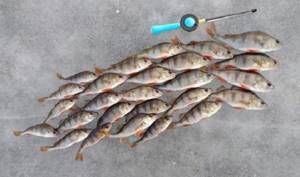
Bait with a compact slide
In the dead of winter, when you can’t wait for a bite, many experienced anglers place bloodworms on the bottom in a small mound. The bait is delivered to the site by a feeder, which is opened when it reaches the bottom. The advantages of this method are that such point bait will allow you to always know where the predator will gather, and catching perch with a jig will always be successful.
But the main thief of bloodworms is the ubiquitous small ruff. He reacts instantly to such tasty complementary foods. And if a flock of ruff attacks such a hill, then it will not wait for the perch. If you still decide to wait for the perch, and not bait the ruffs for a tasty fish soup, then it’s tedious to sprinkle the pile of bloodworms with sand or “crumbs”.
Vegetable bait
You can feed perch in winter with regular vegetable bait for catching peaceful fish. In our case, it is better to use a fine dust mixture. It should be crumbly and immediately fall apart in the water, forming a cloud of turbidity. The goal is to attract little things, to create a fuss. For this celebration of life, the perch will also catch up, if there is one nearby. There is no special mixture or recipe for such complementary foods - you can use any. But it can be significantly improved specifically for perch by adding animal components or bloodworms. Skins and waste from shrimp eaten yesterday with beer are perfect.
Bait for perch
The first believe that feeding perch is an absolutely useless activity that will not bring the effect observed when feeding white fish.
The latter believe that complementary feeding of perch is possible in various situations, and sometimes even necessary. Naturally, when catching a striped robber with a spinning rod, there can be no talk of feeding it.
Fishing with float gear or donka is another matter. Also, when ice fishing, properly prepared bait for perch in winter can sometimes work wonders, and the angler who uses it has a much better catch in terms of quantity and quality.
Groundbait in ice
This method will help when standard methods do not allow you to use a brush. Bloodworms or jigs are poured with water into silicone molds and frozen. For negative buoyancy, sand is also added there. These pieces of ice fall into the hole and, gradually thawing and releasing particles, attract fish.
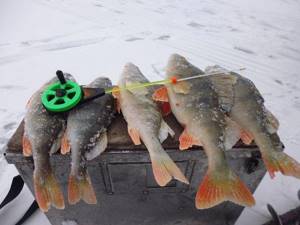
Flavorings and attractants
What smells does perch like in winter? The answer is banal - bloodworms, blood, fish. A real effective activator of bite for perch in winter can be made at home with your own hands by making minced meat from the animal components listed in the article. In stores you can find industrial attractants and activators for perch in winter. The question of their effectiveness is open. Such additives are sold in the form of pastes or sprays. Some actually work, but on sale you can often come across fakes and ruin your fishing trip.
